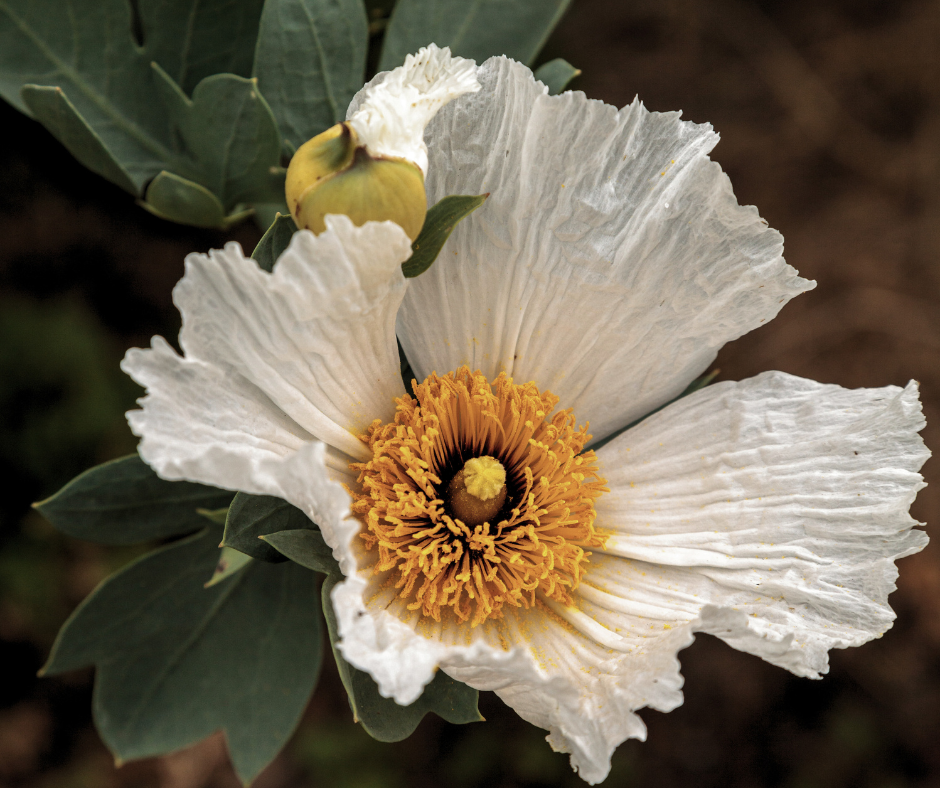

25 Drought-Tolerant, Fire-Resistant Plants to Reduce Your Risk
Summary
Reflection Questions
Journal Prompt
As wildfires continue to pose a significant threat to homes and communities, incorporating drought-tolerant, fire-resistant plants into your landscape can be an important step in reducing fire risk. These plants can slow the spread of flames and help create defensible space around your home. Bear in mind that even fire resistant plants are not enough to protect a home entirely. However, by selecting plants with high moisture content, low flammability, and other fire-resistant characteristics, you can enhance the safety and resilience of your property. Below are 25 drought-tolerant, fire-resistant plants that can help you safeguard your home against wildfires. Read on to learn more!
25 Drought-Tolerant, Fire-Resistant Plants to Reduce Your Risk
California Lilac (Ceanothus spp.)
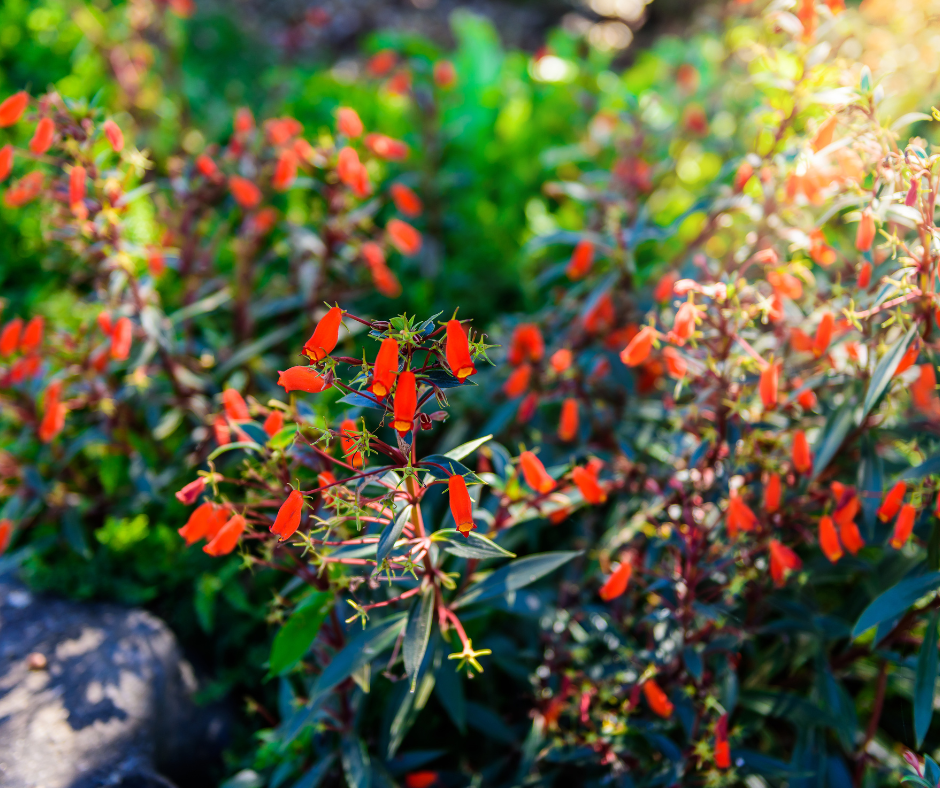

California Lilac, or Ceanothus, is a genus of evergreen shrubs known for their stunning blue flowers. These shrubs are excellent for creating defensible space in wildfire-prone areas due to their high fire resistance. The plants have a low resin content and their leaves contain high moisture, which makes their fire resistant plant material less likely to ignite.
Additionally, their dense growth can act as a windbreak and barrier, helping to slow down the spread of fire. California Lilac thrives in well-drained soils and sunny locations, making it a practical and attractive choice for fire-resistant landscaping. Be sure to keep your plants healthy and remove dying plant material in order to continue reducing fire risk.
Purple Sage (Salvia leucophylla)
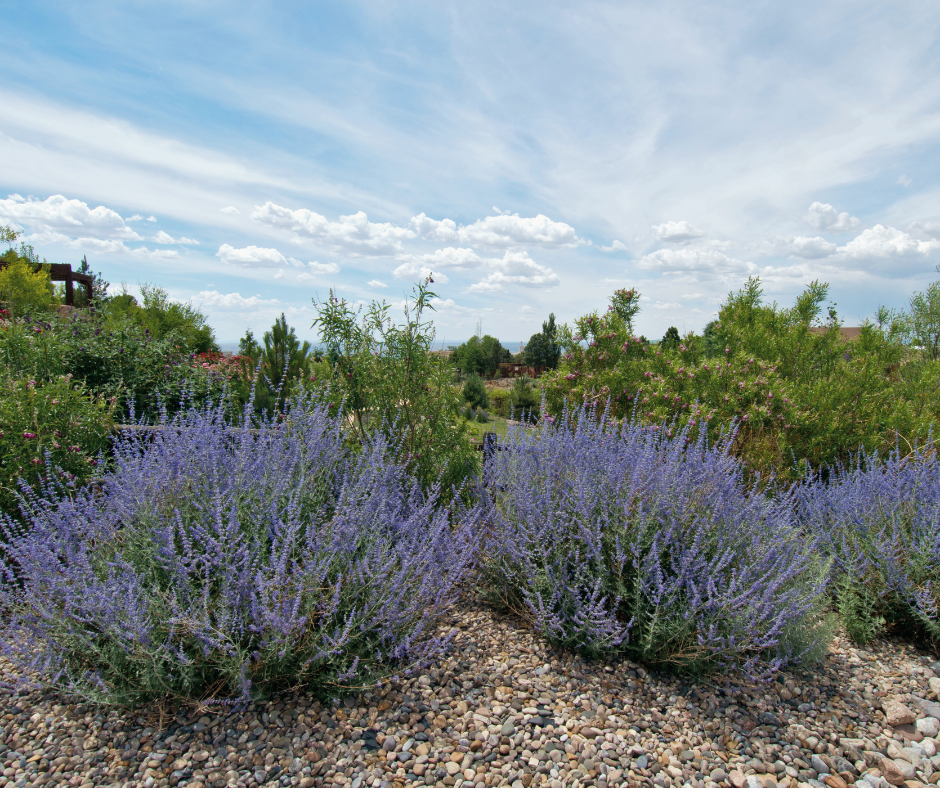

Purple Sage, also known as Salvia leucophylla, is an aromatic shrub native to California. It is highly valued for its fire-resistant plant characteristics, as its leaves are filled with volatile oils that actually help the plant to self-prune, dropping dry leaves that could fuel a fire.
The plant’s silver-gray foliage and lavender-pink flowers add color to the landscape, while its deep root system helps stabilize soil and reduce erosion. Purple Sage thrives in dry, well-drained soils and full sun, making it a resilient and attractive option for areas at risk of wildfires.
Yarrow (Achillea millefolium)
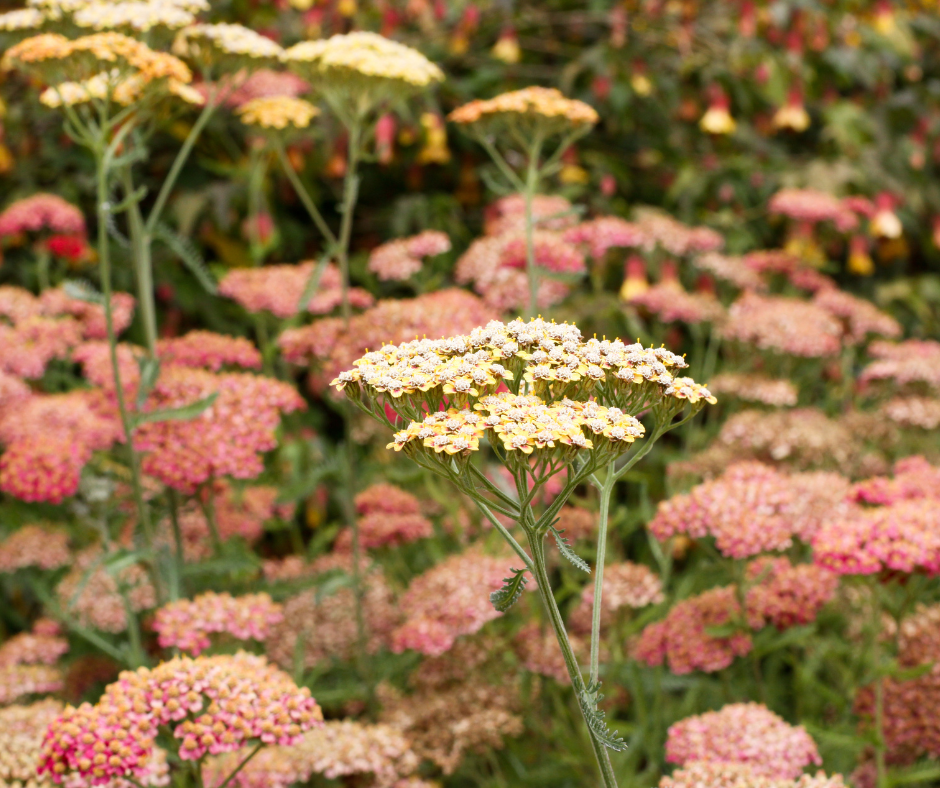

Yarrow, or Achillea millefolium, is a perennial plant with feathery foliage and clusters of small, white to pink flowers. This plant is known for its high moisture content and low flammability, which makes it an excellent choice for fire-resistant landscaping.
Yarrow’s extensive root system helps to hold soil in place, reducing erosion and promoting soil health. It is drought-tolerant and thrives in a variety of soil types, making it a versatile and resilient addition to defensible space. Yarrow also attracts beneficial insects, contributing to a healthy garden ecosystem.
Western Redbud (Cercis occidentalis)
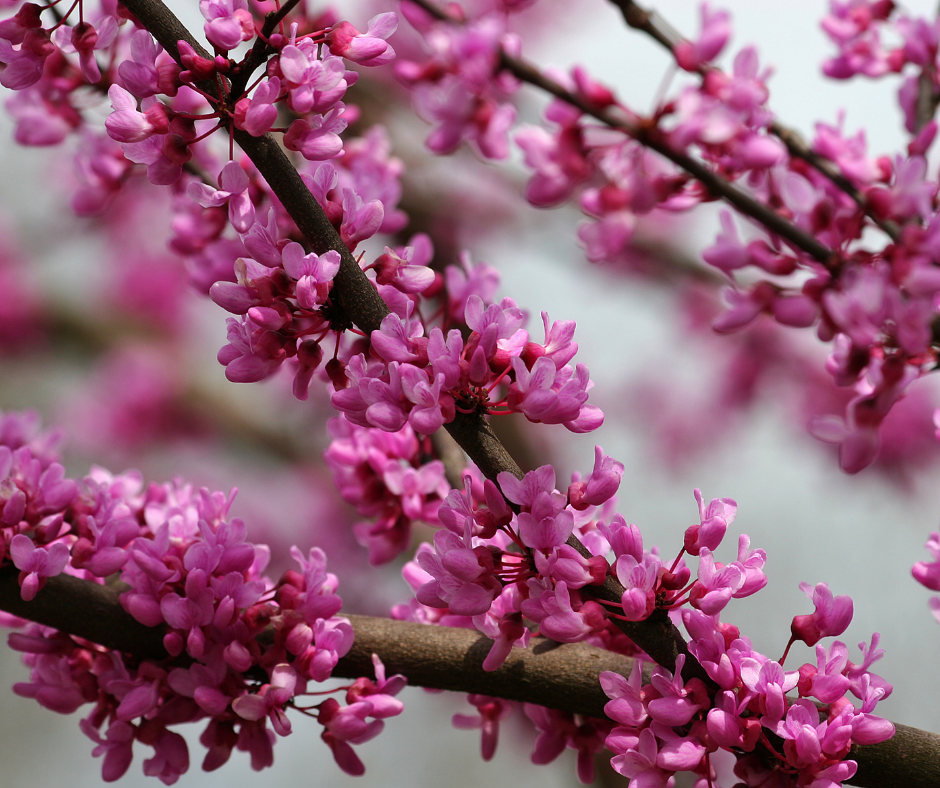

Western Redbud, or Cercis occidentalis, is a deciduous tree that features heart-shaped leaves and vibrant pink flowers in spring. This tree is notable for its fire-resistant qualities, as it has a low fuel load and high moisture content, making it less likely to ignite during a wildfire.
Western Redbud is also valued for its aesthetic appeal, providing year-round interest with its spring blossoms, summer foliage, and fall color. It grows well in a range of soil types and can tolerate drought conditions, making it a practical and beautiful choice for fire-resistant landscaping.
Bush Monkeyflower (Mimulus aurantiacus)
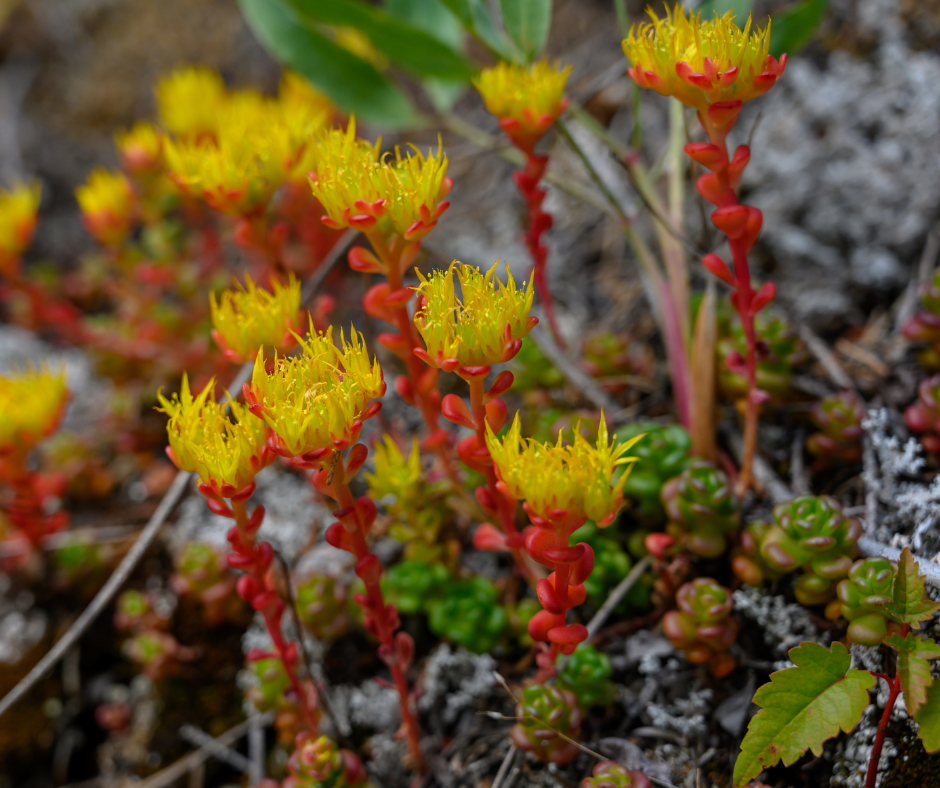

Bush Monkeyflower, or Mimulus aurantiacus, is an evergreen shrub known for its tubular flowers, which range in color from yellow to orange and red. This plant is highly valued for its fire-resistant properties. Its leaves have a high moisture content, which reduces the likelihood of ignition.
Additionally, the shrub’s structure and growth habit help to minimize the spread of fire, making it an effective component in creating defensible space around homes. Bush Monkeyflower thrives in well-drained soils and sunny locations, making it a versatile and attractive option for fire-resistant landscaping.
Oregon Grape (Mahonia aquifolium)


Oregon Grape, or Mahonia aquifolium, is an evergreen shrub with holly-like leaves and clusters of bright yellow flowers. This plant is particularly fire-resistant due to its thick, leathery leaves and high moisture content.
The foliage is slow to ignite and can help slow the spread of fire, making it an excellent choice for defensible space in fire-prone areas. Oregon Grape is also drought-tolerant and thrives in a variety of soil types, from sandy to clay, making it a resilient and practical addition to fire-resistant landscapes.
Manzanita (Arctostaphylos spp.)
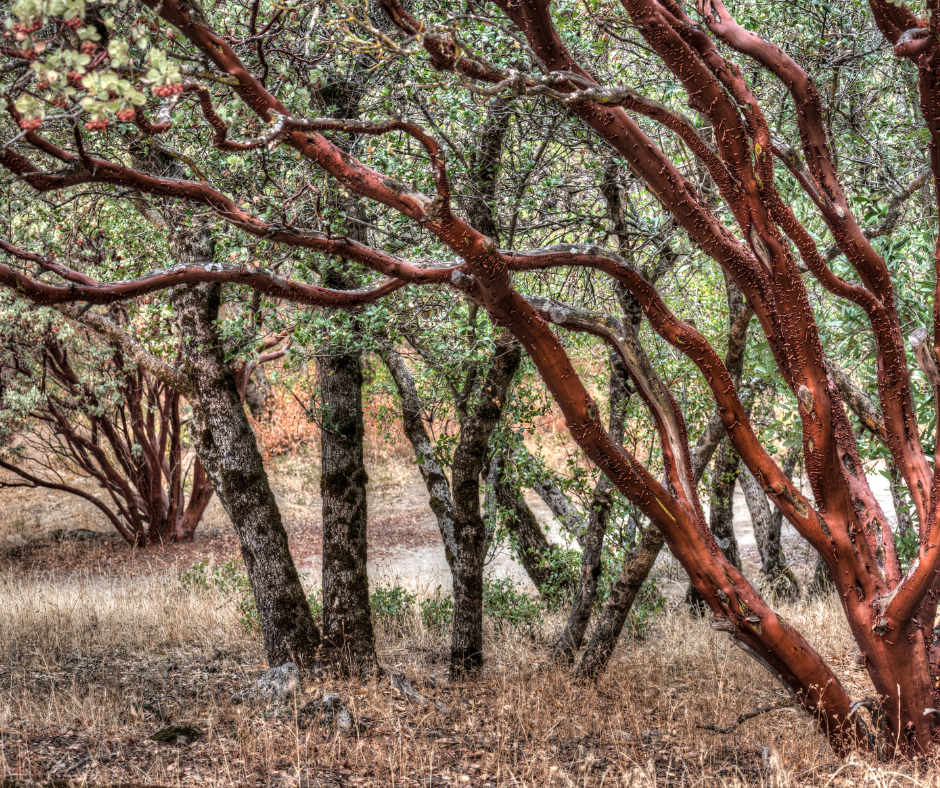

Manzanita, or Arctostaphylos, is an evergreen shrub characterized by its smooth red bark and small white or pink flowers. This plant is known for its fire-resistant properties, as it has a low fuel load and its leaves contain moisture that helps to prevent ignition.
Manzanita is also highly drought-tolerant, making it well-suited to dry, fire-prone regions. Its dense growth habit can act as a natural barrier to slow the spread of fire. Manzanita is often used in fire-resistant landscaping for its combination of beauty and practicality.
Coral Bells (Heuchera spp.)
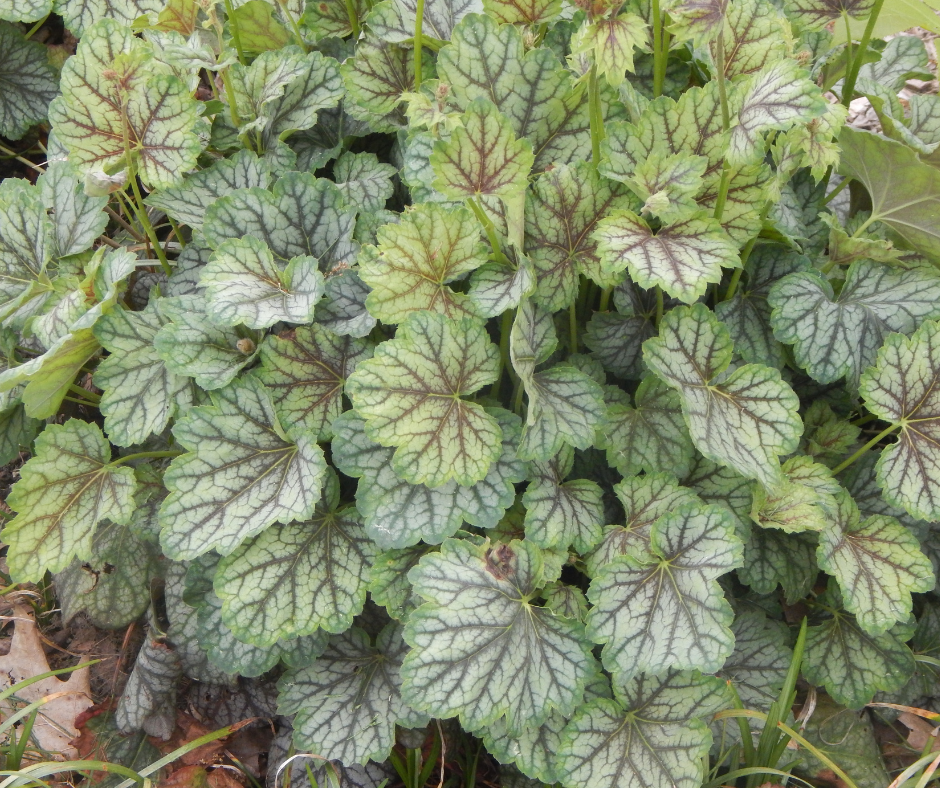

Coral Bells, or Heuchera, is a perennial plant known for its attractive foliage and delicate flowers. While not traditionally thought of as a fire-resistant plant, Coral Bells have a high moisture content in their leaves and stems, which helps reduce the risk of ignition.
Their low-growing habit and dense foliage can help create a fire-resistant ground cover that reduces the spread of flames. Coral Bells thrive in shaded to partially sunny areas and well-drained soils, adding both aesthetic appeal and fire resistance to landscapes.
Toyon (Heteromeles arbutifolia)


Toyon, or Heteromeles arbutifolia, is an evergreen shrub that produces bright red berries in the fall and winter. This plant is highly fire-resistant due to its thick, leathery leaves that retain moisture, making it less likely to catch fire.
Toyon is a resilient plant that can thrive in various soil types and is drought-tolerant, making it ideal for fire-prone areas. Its dense growth can also help act as a barrier to slow the spread of fire. In addition to its fire-resistant properties, Toyon provides food and habitat for wildlife, making it a valuable addition to fire-resistant landscaping.
Goldenrod (Solidago spp.)
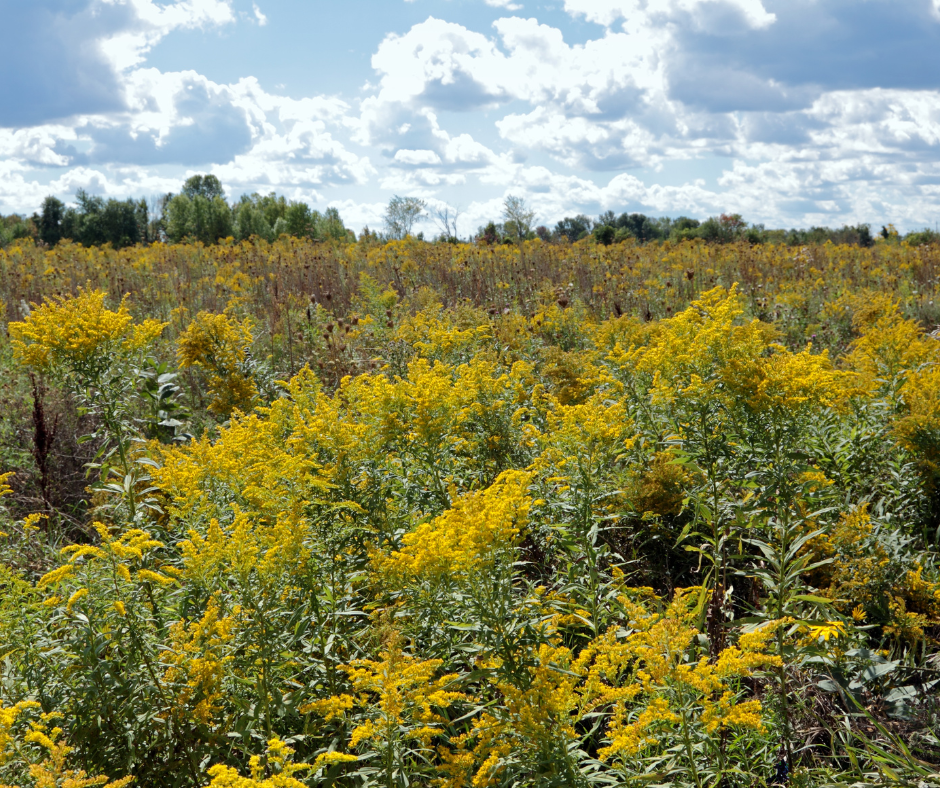

Goldenrod, or Solidago, is a perennial plant known for its bright yellow flower clusters. This plant is fire-resistant due to its high moisture content and the structure of its foliage, which is less likely to ignite quickly. Goldenrod’s deep root system helps stabilize soil and reduce erosion, which is beneficial in fire-prone areas.
These drought tolerant plants thrive in a variety of soil types and conditions, making it a versatile addition to fire-resistant landscaping. Goldenrod also supports pollinators, contributing to the ecological health of the garden while providing fire resistance.
Lupine (Lupinus spp.)
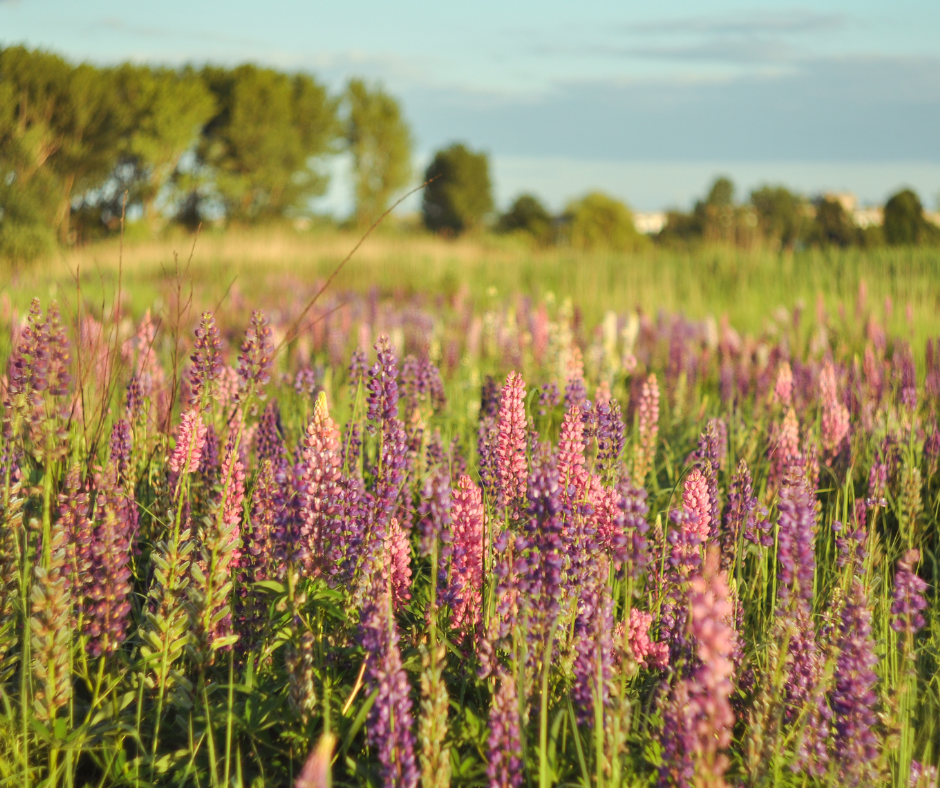

Lupine, or Lupinus, is a perennial plant known for its tall spikes of colorful flowers, which can range from blue and purple to pink and white. Lupines are valued for their fire-resistant properties due to their high moisture content and relatively low oil content, which makes them less likely to ignite.
Additionally, their deep root systems help stabilize soil, reducing erosion and promoting healthy soil structure. Lupines thrive in a variety of soil types and are drought-tolerant once established, making them an excellent choice for fire-prone landscapes.
Penstemon (Penstemon spp.)
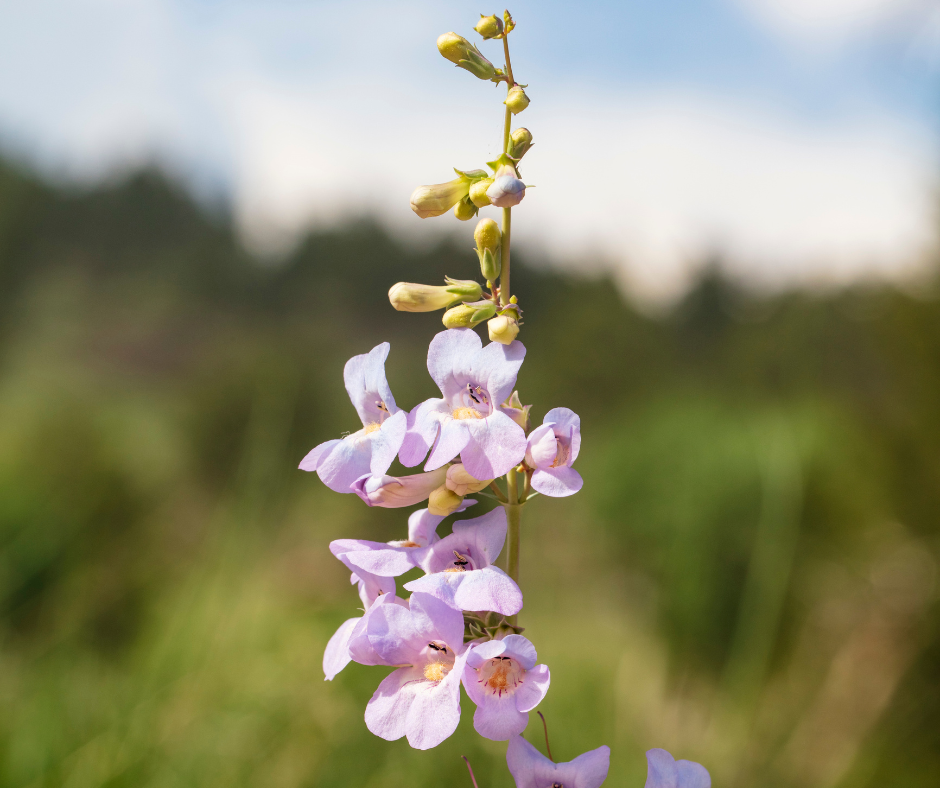

Penstemon, also known as beardtongue, is a perennial plant characterized by its tubular flowers that come in a range of colors, including red, pink, purple, and blue. Penstemon plants are fire-resistant due to their high moisture content and low resin levels, which help prevent them from catching fire easily.
These plants are also drought-tolerant and well-suited to dry, rocky soils, making them ideal for fire-prone areas. Penstemon’s attractive flowers and foliage make it a popular choice for both ornamental and fire-resistant landscaping.
Red Columbine (Aquilegia formosa)
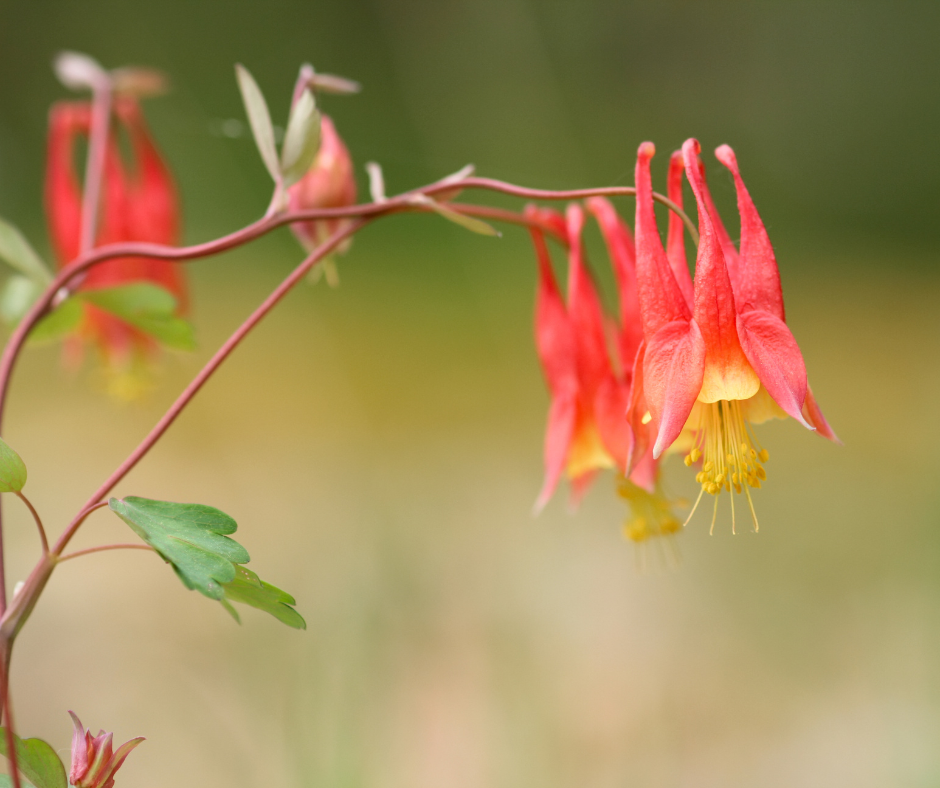

Red Columbine, or Aquilegia formosa, is a perennial plant known for its distinctive red and yellow flowers that resemble small lanterns. This plant is fire-resistant due to its high moisture content and low flammability.
Red Columbine thrives in shaded to partially sunny areas with well-drained soil, making it a versatile choice for creating defensible space. Its delicate flowers and attractive foliage add beauty to fire-resistant landscapes, and it is also a favorite among pollinators, providing ecological benefits in addition to fire resistance.
Sticky Monkeyflower (Diplacus aurantiacus)
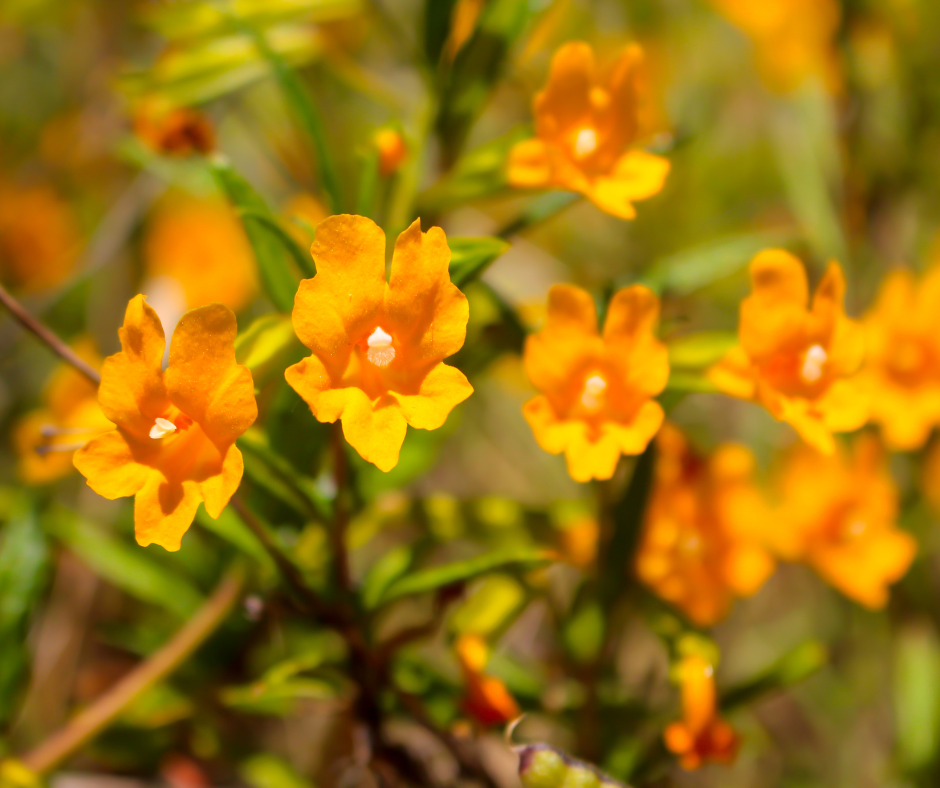

Sticky Monkeyflower, or Diplacus aurantiacus, is an evergreen shrub with bright orange flowers that bloom profusely in spring and summer. This plant is fire-resistant due to its high moisture content and the protective properties of its sticky leaves, which are less likely to ignite.
Sticky Monkeyflower thrives in well-drained soils and full sun, making it well-suited to fire-prone areas. Its compact growth habit and colorful flowers make it a valuable addition to fire-resistant landscaping, providing both aesthetic appeal and functional fire protection.
Ninebark (Physocarpus opulifolius)


Ninebark, or Physocarpus opulifolius, is a deciduous shrub known for its exfoliating bark and clusters of white flowers. This plant is fire-resistant due to its high moisture content and the protective properties of its thick bark, which helps shield the inner wood from heat and flames.
Ninebark is adaptable to a wide range of soil conditions and is drought-tolerant once established, making it a resilient choice for fire-prone landscapes. Its attractive bark, flowers, and foliage provide year-round interest, enhancing both the beauty and safety of the garden.
Blue Elderberry (Sambucus nigra ssp. caerulea)
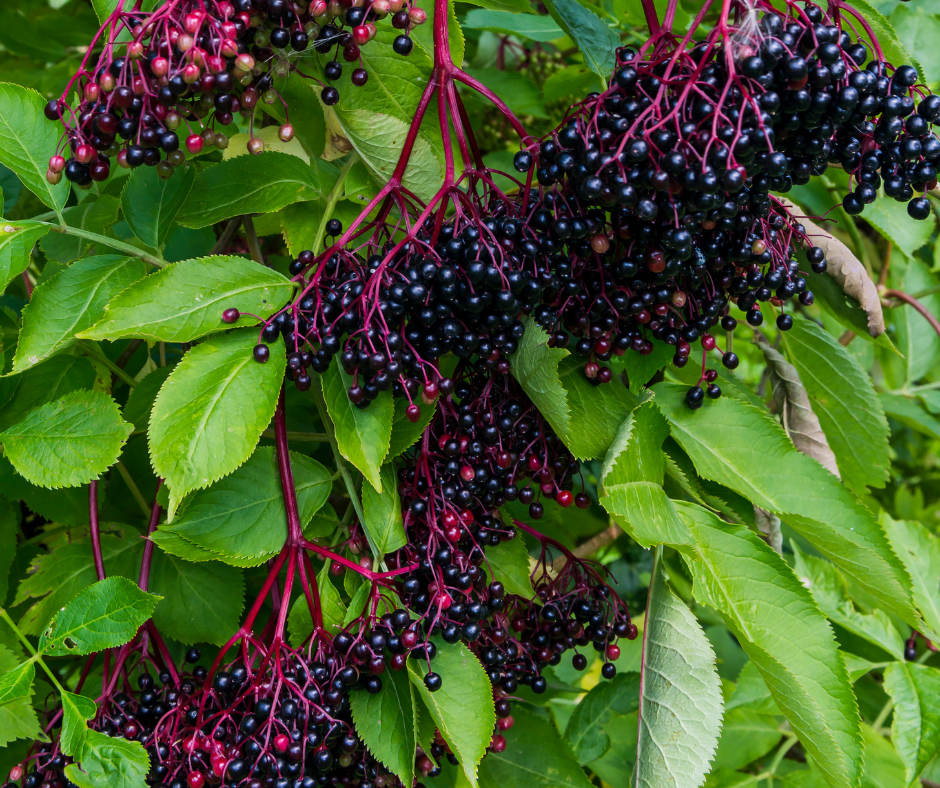

Blue Elderberry, or Sambucus nigra ssp. caerulea, is a deciduous shrub that produces clusters of white flowers followed by blue-black berries. This plant is fire-resistant due to its high moisture content and relatively low flammability.
Fuel your creative fire & be a part of a supportive community that values how you love to live.
subscribe to our newsletter
*please check your Spam folder for the latest DesignDash Magazine issue immediately after subscription


Blue Elderberry thrives in a variety of soil types and conditions, including dry and rocky areas, making it suitable for fire-prone landscapes. Its dense growth habit can help act as a barrier to slow the spread of fire, and its berries provide food for wildlife, adding ecological value to fire-resistant landscaping.
California Fuchsia (Epilobium canum)
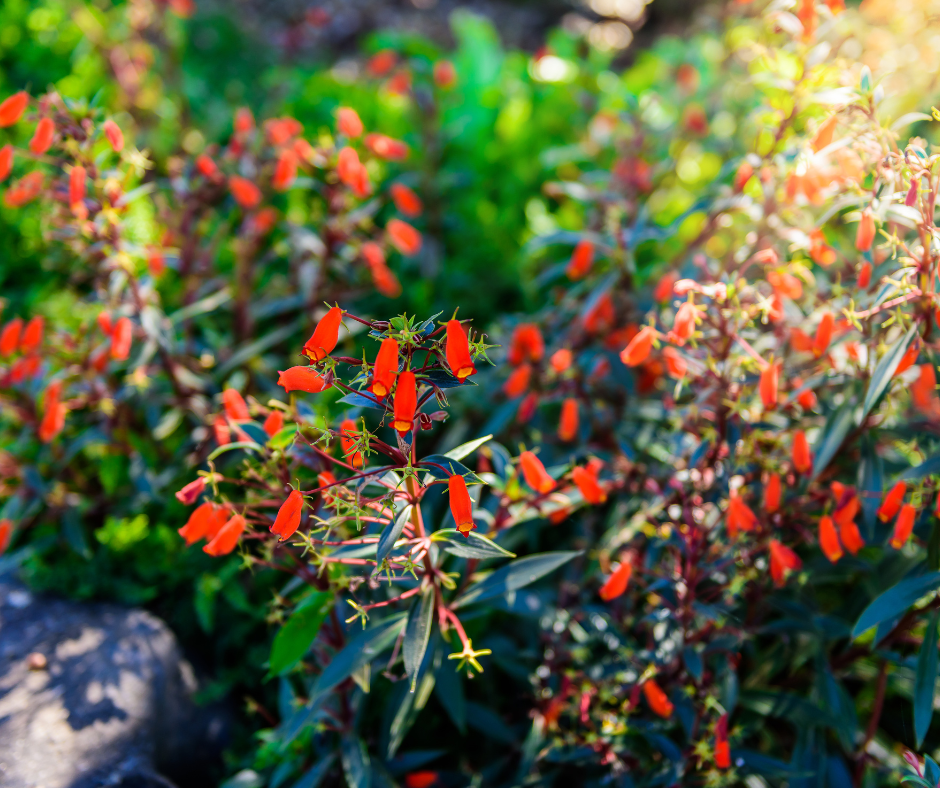

California Fuchsia, or Epilobium canum, is a perennial plant renowned for its bright red tubular flowers that attract hummingbirds. This plant is highly fire-resistant due to its low resin content and high moisture levels, which make it less likely to ignite during wildfires.
California Fuchsia is drought-tolerant and thrives in well-drained soils and full sun, making it a resilient choice for fire-prone areas. Its vibrant flowers and hardy nature make it an excellent addition to defensible space landscaping.
Serviceberry (Amelanchier alnifolia)
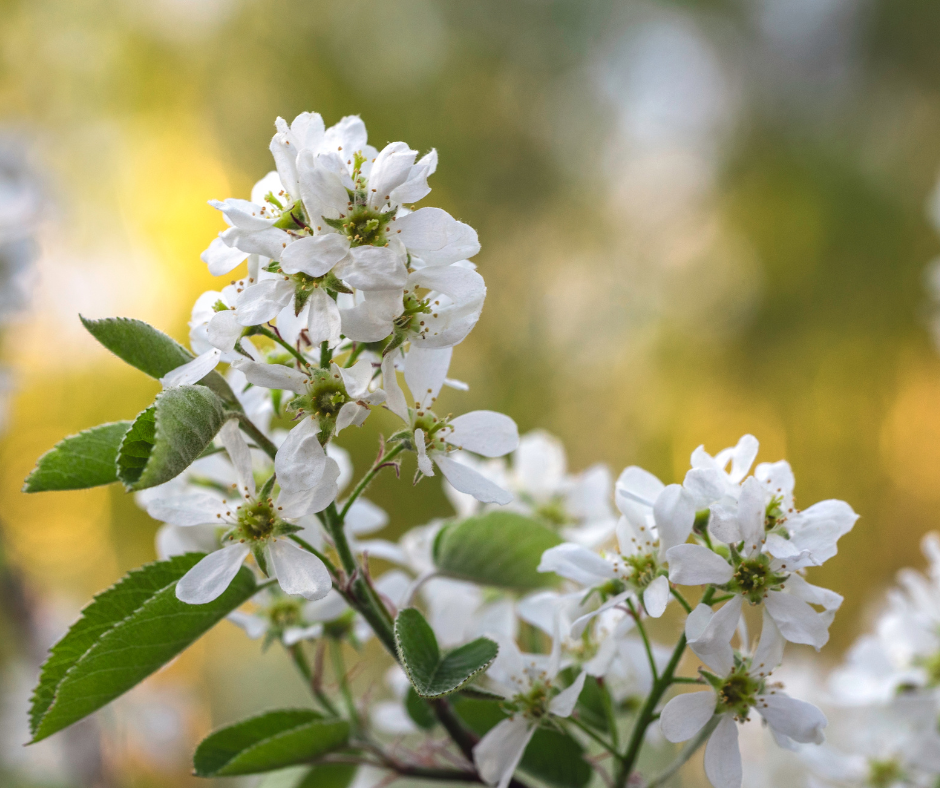

Serviceberry, or Amelanchier alnifolia, is a deciduous shrub that produces white flowers in spring and edible berries in summer. This plant is fire-resistant due to its high moisture content and the thick, woody structure of its branches, which are less likely to catch fire.
Serviceberry is adaptable to a variety of soil types and conditions, including dry, well-drained soils. Its ornamental flowers, attractive foliage, and edible berries make it a multifunctional plant for fire-resistant landscaping.
Blanketflower (Gaillardia aristata)
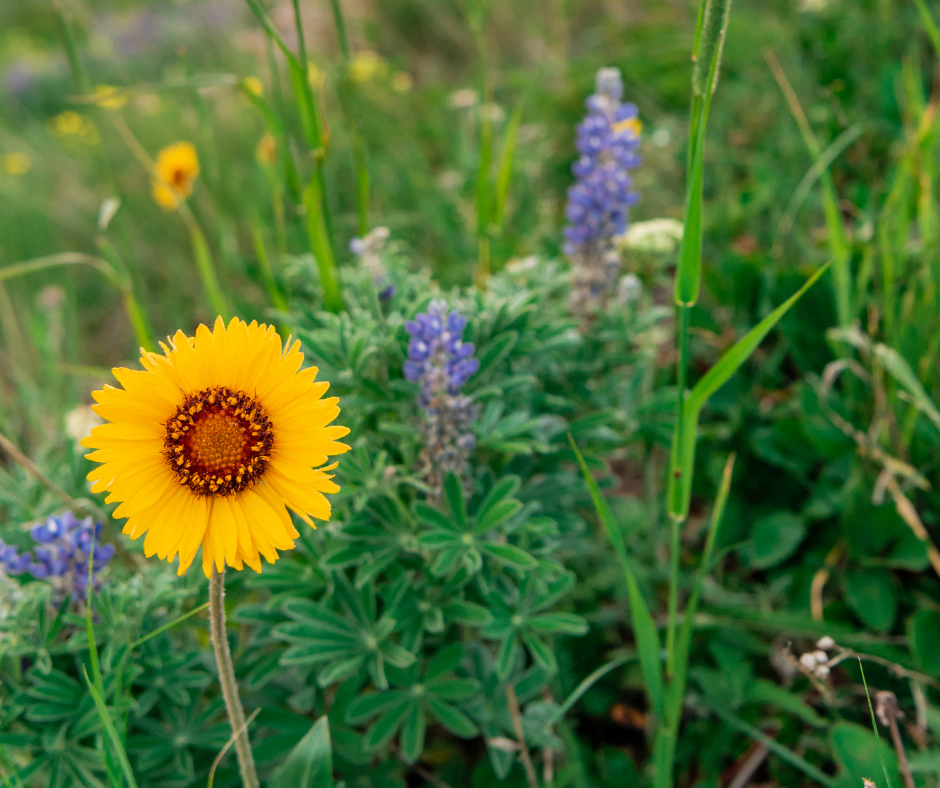

Blanketflower, or Gaillardia aristata, is a perennial plant with bright, daisy-like flowers that bloom in vibrant shades of red, yellow, and orange. This plant is fire-resistant due to its high moisture content and low oil levels, which help prevent ignition.
Blanketflower is drought-tolerant and thrives in well-drained soils and full sun, making it an ideal choice for fire-prone areas. Its long-lasting blooms and hardy nature make it a valuable addition to fire-resistant gardens.
Black-Eyed Susan (Rudbeckia hirta)
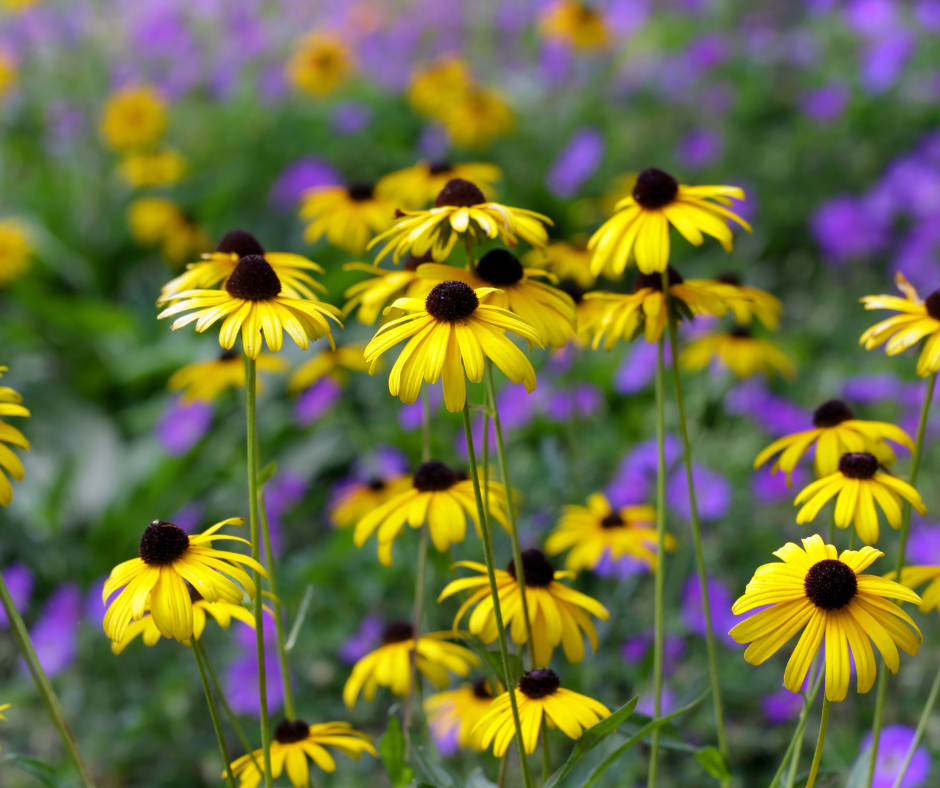

Black-Eyed Susan, or Rudbeckia hirta, is a perennial plant known for its bright yellow petals and dark brown centers. This plant is fire-resistant due to its high moisture content and low flammability, which help it withstand the heat of wildfires.
Black-Eyed Susan is adaptable to a wide range of soil types and conditions, including dry and sandy soils. Its cheerful flowers and easy-care nature make it a popular choice for creating fire-resistant landscapes.
Beebalm (Monarda fistulosa)
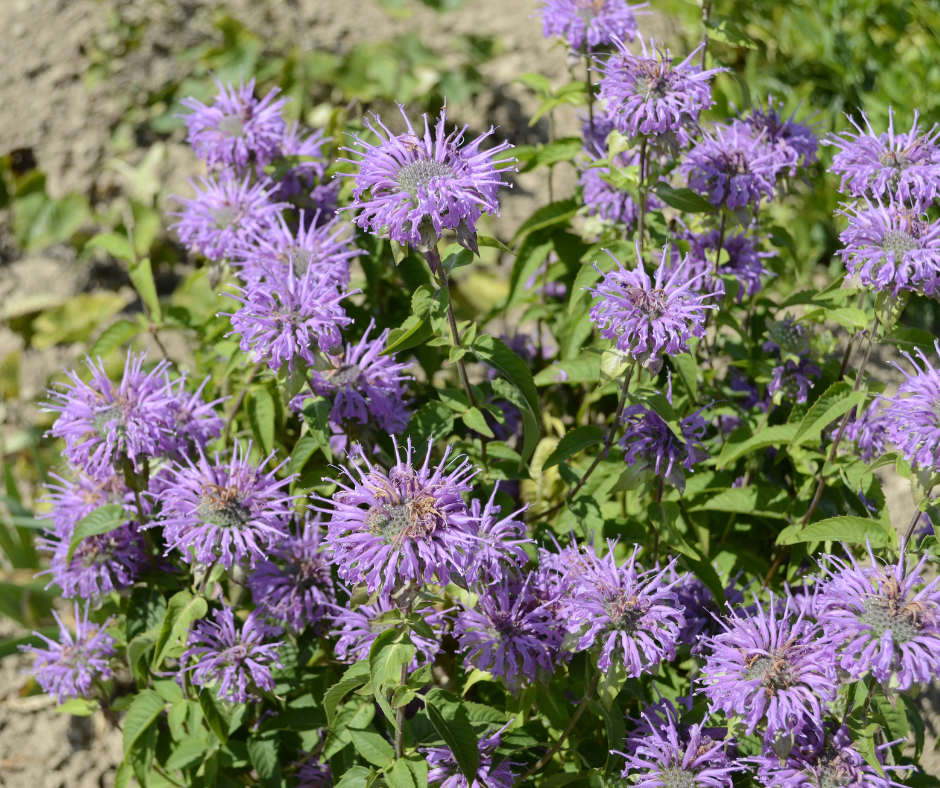

Beebalm, or Monarda fistulosa, is a perennial plant with lavender-pink flowers that attract pollinators like bees and butterflies. This plant is fire-resistant due to its high moisture content and relatively low oil levels, which reduce its flammability.
Beebalm thrives in well-drained soils and can tolerate dry conditions, making it suitable for fire-prone areas. Its aromatic foliage and showy flowers make it a beautiful and practical addition to fire-resistant gardens.
Purple Coneflower (Echinacea purpurea)
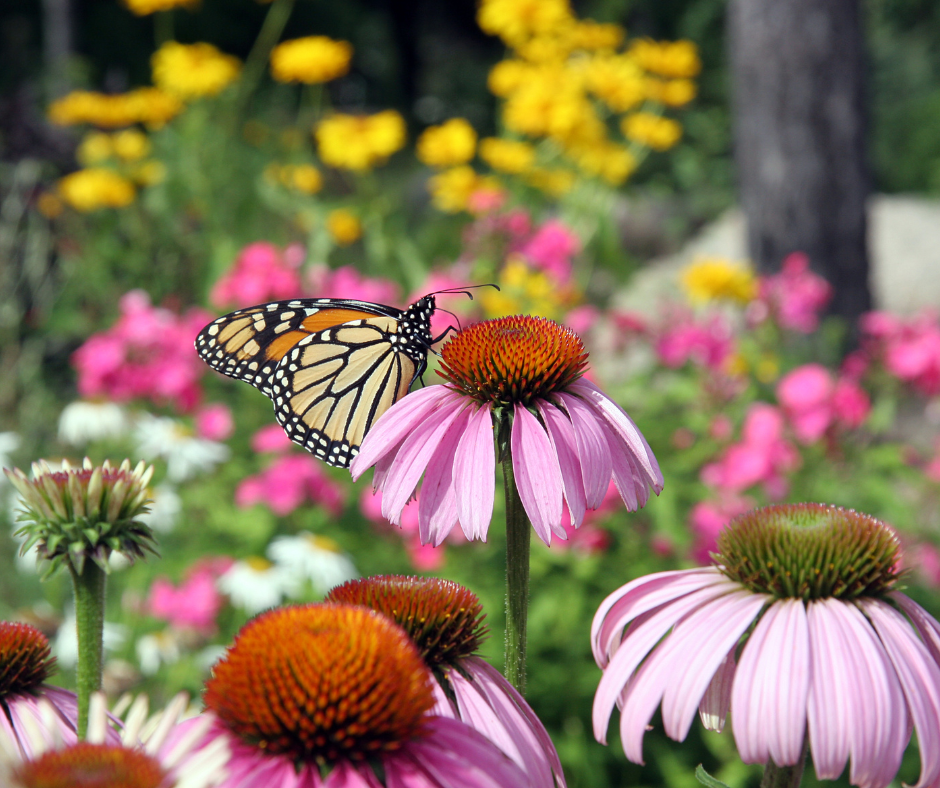

Purple Coneflower, or Echinacea purpurea, is a perennial plant with distinctive pink to purple daisy-like flowers. This plant is fire-resistant due to its high moisture content and sturdy, fibrous stems, which are less likely to ignite.
Purple Coneflower is drought-tolerant and thrives in well-drained soils and full sun, making it a resilient choice for fire-prone landscapes. Its long-lasting blooms and medicinal properties add both beauty and functionality to fire-resistant gardens.
Wild Lilac (Ceanothus spp.)
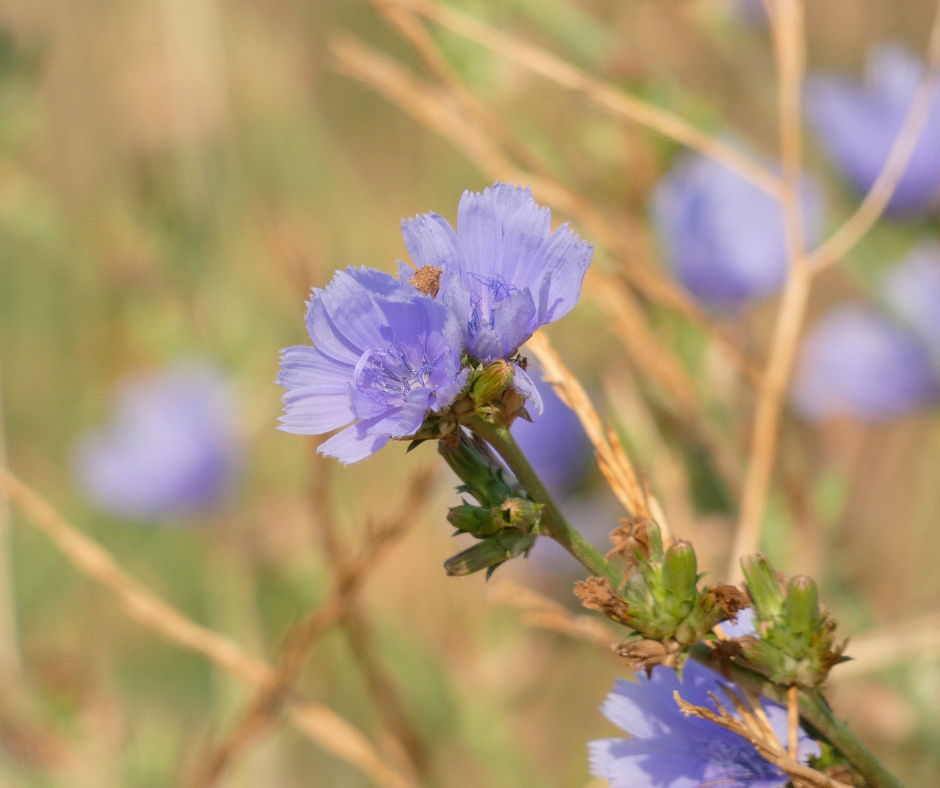

Wild Lilac, or Ceanothus, is an evergreen shrub known for its dense clusters of blue flowers. This plant is highly fire-resistant due to its low resin content and high moisture levels, which make it less likely to catch fire. Wild Lilac thrives in well-drained soils and full sun, making it a suitable choice for fire-prone areas. Its dense growth habit and attractive flowers provide both aesthetic appeal and effective fire resistance in landscaping.
American Beautyberry (Callicarpa americana)


American Beautyberry, or Callicarpa americana, is a deciduous shrub known for its vibrant clusters of purple berries. This plant is fire-resistant due to its high moisture content and thick, woody stems, which are less likely to ignite. American Beautyberry thrives in a variety of soil types and conditions, including well-drained soils and partial shade. Its ornamental berries, attractive foliage, and fire-resistant properties make it a valuable addition to defensible space landscaping.
Matilija Poppy (Romneya coulteri)
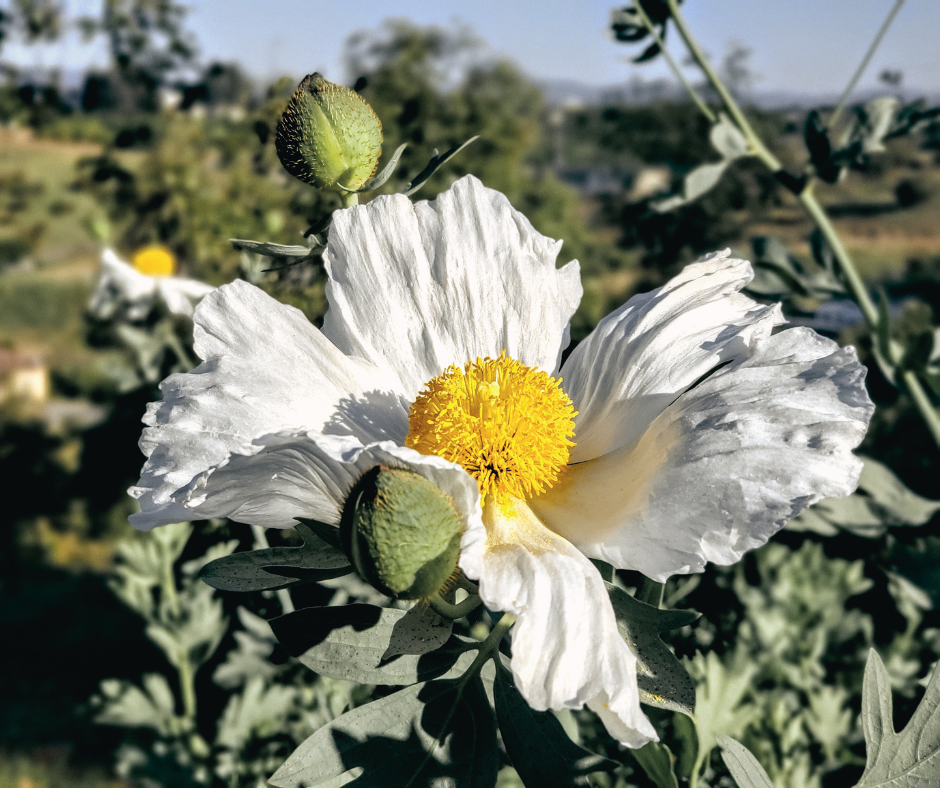

Matilija Poppy, or Romneya coulteri, is a striking perennial plant known for its large, white, crepe-like flowers with bright yellow centers and its attractive, fern-like foliage. This plant is highly fire-resistant due to its high moisture content and the structure of its leaves, which are less prone to ignition.
Matilija Poppy thrives in well-drained soils and full sun, and it is particularly well-suited to dry, fire-prone areas. Its robust root system helps to stabilize soil and reduce erosion, further contributing to fire mitigation efforts. The plant’s ability to regenerate quickly after a fire makes it an excellent choice for fire-resistant landscaping, providing both beauty and resilience to gardens in wildfire-prone regions.
Working with a Landscape Designer and Architect to Protect Your Home from Fire Risk
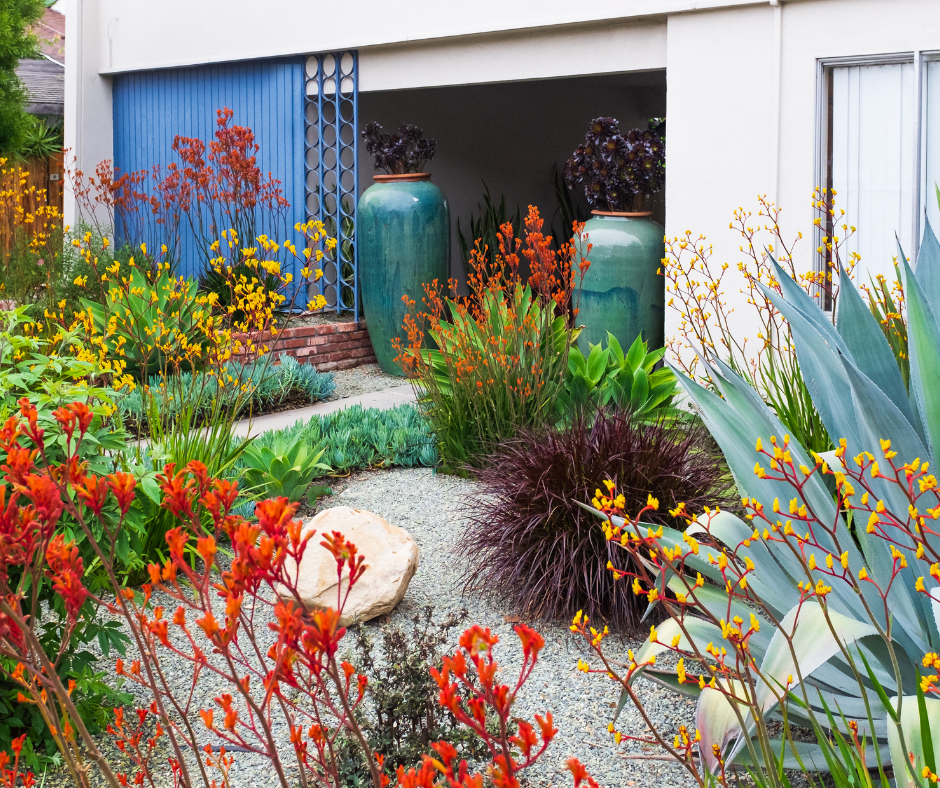

Working with an expert landscape designer and a skilled landscape architect is essential for effectively designing fire-resistant landscapes and hardscaping elements. A landscaper brings hands-on experience and practical knowledge to ensure your property is not only aesthetically pleasing but also safer from the threat of wildfires. They can help you strategically identify fire hazardous plants, aid you in selecting fire resistant plants, maintain appropriate spacing, and select materials that reduce the risk of fire spread. In contrast, a landscape architect focuses on designing the overall layout and hardscaping elements, like stone pathways, gravel beds, and retaining walls, which provide effective fire breaks and add functional beauty to your property.
Choosing native plants is essential for fire-resistant landscaping, and this is where a landscape designer’s expertise is invaluable. Native plants are naturally adapted to the local climate and soil conditions, making them more resilient and easier to maintain compared to non-native species. They typically require less water and are less likely to become invasive, reducing the potential for creating dense, flammable vegetation. Invasive species can quickly overrun an area, creating a continuous fuel load that can easily ignite and spread fire. By selecting native plants, a landscaper supports local ecosystems and biodiversity while enhancing the fire resistance of your landscape.
Hardscaping elements play another important role in fire-resistant landscape design, and this is the domain of the landscape architect. They design and implement features like stone pathways, gravel beds, and retaining walls that create effective fire breaks, slowing the spread of fire and providing safe zones around your property. These elements are not only functional but can be aesthetically integrated into your landscape, enhancing the overall visual appeal of your outdoor space. Properly designed hardscaping not only adds value to your home but also serves as a crucial barrier against wildfires.








